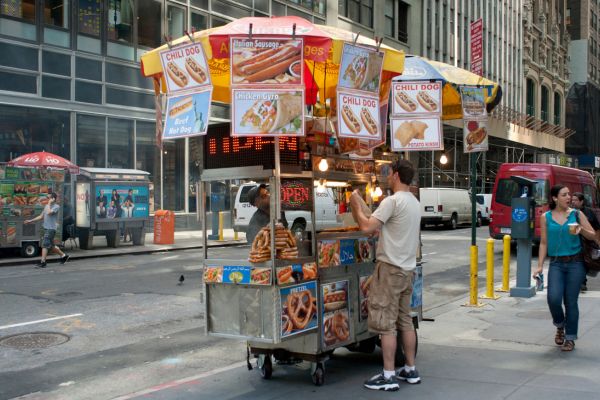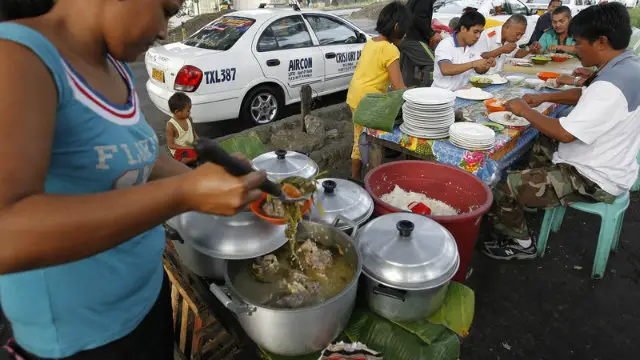A carinderia business may be attractive and seemingly easy to set up: have a stall near your house, few tables and chairs, adequate cooking equipment and utensils and a good cook might be all you need to get started. But it’s actually a tough business to manage with low margins and factors that are hard to control.
That is why, just like in any other business venture, careful planning and execution is key to getting the carinderia business off the ground and get started. A misaligned priority or missing out on a key component of the business could easily shut it down.
So we came up with this basic business plan for those interested but unsure if carinderia business is the way to go. Just because you like the business does not always mean it’s meant for you. Thorough research and sufficient business support are needed.
Table of Contents
Market research
Was the idea of establishing your business borne out of your passion to cook? Was it because a vacant stall in the public market seems suitable to set up your carinderia? Or was it because you hear so many people complain about not having enough meal choices in your neighborhood? If you tick any of the above boxes, you’ve got the potential to get started but not enough to steamroll with the carinderia bandwagon.
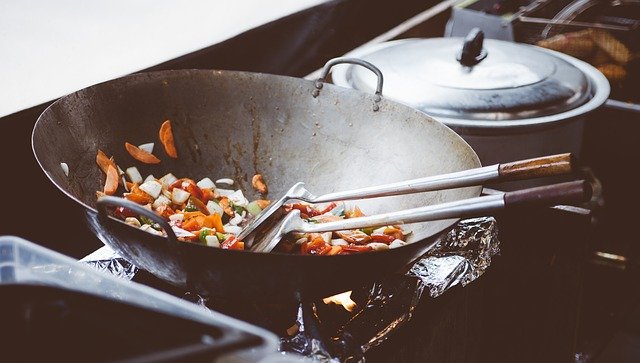
Market research on the following need to be conducted:
Potential customers. Observe the neighborhood where a potential carinderia will be located.
- Which segments do they belong to (low-wage workers, office workers, housewives, students, drivers, seasonal workers)?
- What is their corresponding buying power?
- Do they tend to be loyal at a specific eatery or can easily be swayed of their choices depending on available food, season, weather, etc?
- Are they encouraged to eat out or can easily switch back to prepared meals if provided with the opportunity?
Existing carinderias in the neighborhood. Identify them and ask yourself and others about them:
- Do they serve a good variety of food for customers?
- Do they operate 24/7 or only during lunch/dinner or a certain times of the day?
- Do they operate as a legitimate business or behave like an extended table serving home-cooked meals?
- Do they source their materials from sustainable
- Do you or others have a good impression of them in terms of sanitation, food taste, price point, general ambiance, and customer service?
- Do they have generally favorable sentiment from customers?
- What are their advantages and disadvantages?
Urban planning and development. Think about what the neighborhood would look like in the next five to ten years.
- Are there proposed landmark buildings, infrastructure projects, new business establishments, or public projects forthcoming?
- Are there new schools, residential buildings, hospitals, or transport rerouting planned?
Available resources. This is key to sustaining the needs of your carinderia business.
- Are suppliers available nearby and accessible without investing a significant amount of money or time? They include meat, poultry, vegetable, seafood, or fruit dealers.
- Are there cheaper alternatives you can explore such as wholesalers who can give you better deals and stronger business relationships?
- Is it easy to find workers like waiters, dishwashers, cooks, assistants, cleaners, and cashiers who can augment the needs of a growing business?
- Is the power supply stable and does not require you to procure generators in case of a power failure?
- Is the water supply stable and does not require interruptions?
- Do you have existing materials and equipment such as fridges, freezers, or gas stoves that can be used and reduce initial spending to set up the carinderia business?
- Is there an ample disposal area to discard material waste?
Financial ability and literacy. This is what everyone wants to discuss when planning for the business so this must be very important.
- Will you use your personal savings to invest in the business?
- Do you need to borrow money to finance the business?
- Do you have a credit line to use as a lifeline in procuring necessary materials?
- Do you or a partner have a background in accounting and basic concepts of cash flow?
- Are you familiar with the business licensing, taxes, wages, and benefits that go with the carinderia business?
Hopefully, the list provides a sufficient understanding of how suitable you are to pursue the business. This research is helpful not only for the business but also to prequalify you as a player in the business. Without due diligence and enough market know-how, challenges that would have been anticipated in this initial research stage could emerge down the road and it’s more difficult to back down and make hard choices.
Capital money
Some sources say us included, that a P15,000 investment will be enough to start the business, maybe as a food delivery business instead of a full-fledged carinderia entity. With limited capital money to buy bulk inventory of ingredients, food will be cooked in smaller portions, and orders are delivered to homes instead of accepting dine-in customers.
But even before operations can begin, administrative expenses should be considered: barangay permits, rental fees, and so on. Profits will be minimal at around 5% depending on how you source your ingredients or save on costs (more on this later below). Breaking even will depend on your setup. If you are mostly utilizing your own resources such as vacant space in the backyard instead of renting a space in the market or family members helping out instead of hiring an extra hand, a significant amount of your capital expenses can be used for production. This counts utensils, cooking equipment, meat and seafood produce, vegetables, and condiments.
Spending your capital money on a formal venue like a market stall may be more expensive but it also signifies your long-term commitment to the business. When the business falters when you find out your backyard does not have enough foot traffic, it’s easy to fold because you are less dependent on external factors. Hiring an experienced cook will help guarantee food quality especially if family members are less skilled or less committed to working for free for the family business.
So it doesn’t mean that if you’re investing less in setting up your eatery business, you’ll more likely to succeed. Likewise, if you borrow a huge amount and are heavily invested in a proper venue, you’ll be less likely to prosper.
Carinderia design
The design of your eatery business will ideally evoke the character of your business: friendly and inviting, a place to relieve the cravings of a hungry stomach, and doubles as a place of socialization. Of course, we all imagine great designs as below with fancy design and bright, airy atmosphere. But we also think of practicality and associated costs. We ask ourselves:
- Do our customers stay long enough to marvel at the interiors or do we simply want them to spend half an hour so more customers can come in and eat?
- Do we wish to establish our presence as the talk of the town and generate word of mouth or even get featured in local magazines or TV shows?
- Do we have enough resources to execute our design plan? Money to pay a good interior designer. Materials to put brilliant design ideas into life.
- Are our ideal designs applicable to the neighborhood we wish to operate in terms of practicality such as comfort, ease of access, and efficiency in managing incoming and outgoing customers?
Nonetheless, let’s explore some inspiration designs for small food kiosks that can be applied to your carinderia.
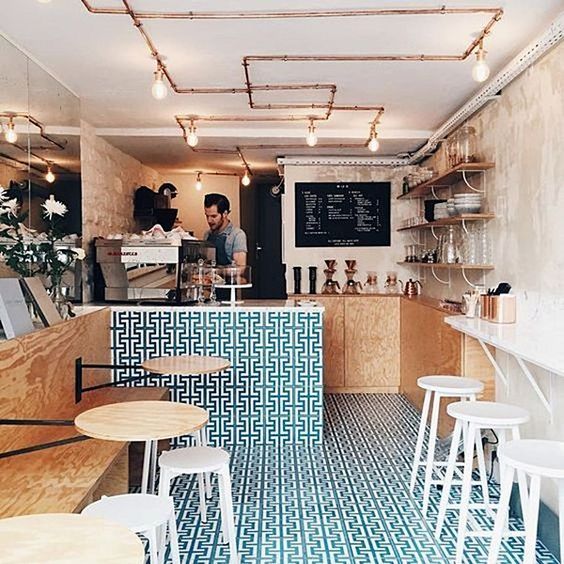
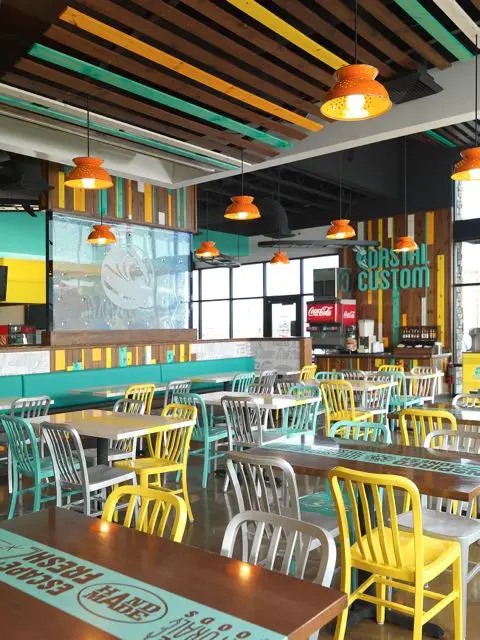
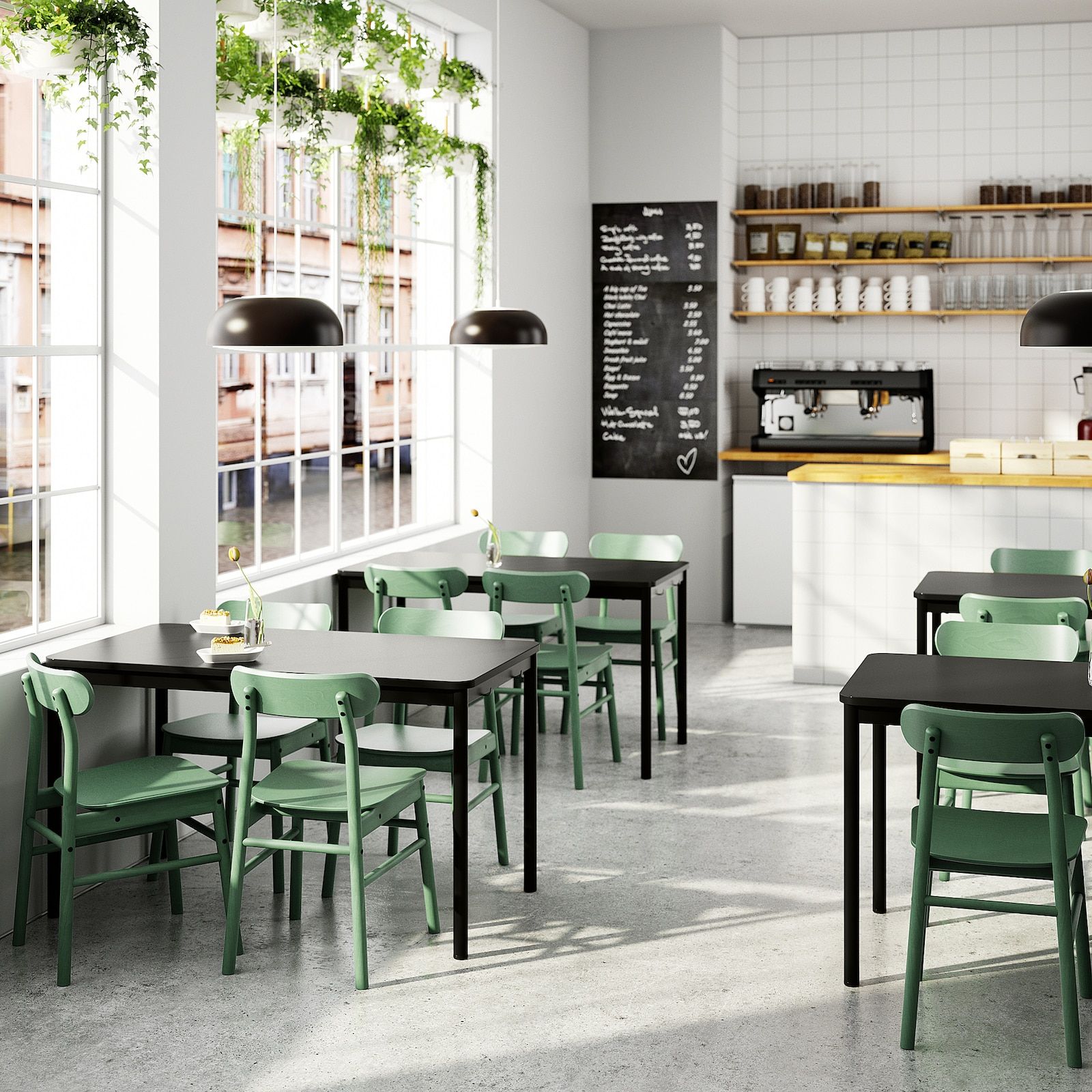
Manpower resources
Managing a carinderia business can range from an all-around cook/dishwasher/accountant/procurement officer to a full team of specialized roles. Depending on the scale of operation and number of customers that can be accommodated at any given time, here are some of those specialty roles:
Cook – the heart and soul of the carinderia business. He or she conceptualize which types of food appear on the menu, handpicks the ingredients, slices them accordingly, and does magical things in the kitchen. Whether honed by skills passed on in the family or acquired in a culinary school, the cook’s masterpiece will be significant in customer loyalty and the carinderia’s reputation.
Manager – often the owner of the carinderia business, he or she oversees the overall operation of the business. From ushering in customers inside to ensure a steady supply of food choices in the tray, he/she attempts to troubleshoot problems and achieve harmony in the operation. The manager can also dabble into cleaning up tables, assisting the cashier, verifying supplier deliveries, and makes quick resolutions on issues that may arise.
Cleaner – this person ensures that the sanitation of the carinderia is in top shape. The cleaner makes quick work of tables and prepares them for the next customer. He or she ensures that leftover soft drinks, plates, and discarded food are away from the eyes of the public as soon as possible and makes prompt disposal of garbage. After operating hours, he or she makes a thorough cleaning of the carinderia: floors, tables and chairs, food shelves, kitchen and cooking area, and lastly, the toilet.
Dishwasher – this role extends beyond cleaning dishes and other tableware, glasses, and cooking utensils during business hours. After hours, the role of the dishwasher will transform to that of the cleaner. This separate role manifests the importance of making the tableware clean; a singular presence of blemish can tarnish the reputation of the carinderia. This is especially crucial if the eatery relies on handwashing and without the help of a dishwashing machine.
Cashier/Accountant – this person takes charge of the finances of the business. He or she collects customer bill payment, looks at the inventory of materials, analyze which menu items are profitable or loss-making, makes suggestions on the menu from a profit perspective. He or she also looks after the cash flow management and makes tight monitoring of expenses (LPG supply, electricity/water bills, supplier invoices, salary/payroll, and taxes and permits) against income.
Utility person – this person does everything not defined from the above list. This role can assist the above jobs or tasks that are not anticipated in the operation. He or she helps arrange the delivery of meat/veggies of suppliers, replaces broken bulbs or faucets, orders extra rice from other restaurants or condiments from the supermarket if supply is short, or keeps an eye on customers who try to steal items like cutlery.
Keeping carinderia operation costs low
In a business known for razor-thin margins, keeping operational costs low is key. There are expenses that you cannot avoid (permits, raw materials, equipment, and labor), but you can keep them low without resorting to unlawful practices to get the bottom line.
-
- Location. Rental costs cover a significant amount in a daily expense, so if you can set up in a space you own, that saves up a lot of money. It can be a small space at the beginning, as you start to attract loyal customers and build your carinderia’s brand. You can later move to a more prominent location and expect your loyal customers to follow.
- Labor. Employing family members can help mitigate labor costs, but it’s also important to realize that even if they are not working for free, and must be compensated in some shape or form. Their presence helps minimize expenses that would otherwise go to a skilled and experienced worker, but their lack of know-how can also be detrimental to the carinderia operation. If they lack exposure to the job, family members can fill roles (dishwashing, cleaning) that are not specialized (cooking, accounting).
- Materials. Will you require high-end meat cuts to achieve premium taste or do lower-grade meats still do the job? Will you use ceramic which is more stylish and food safe or plastic plates that are less risky to damage or breakage?
- Here are other tips to minimize your expenses:
- Buy equipment at second-hand shops, shops winding down, or nearby auction events. This includes fridges, cooking utensils, tables, and chairs. Buying brand-new ones minimize the risk of breakdown, but if you know how to examine the quality of say, a freezer or the safety of a gas stove offered at a second-hand shop, you can save lots of capital money.
- Rent items you don’t need to buy outright. Tables and chairs are classic examples. Once you’ve grown the business, you can replace these with more appropriate dining furniture.
- No freeloaders. Except for family members, do not allow anyone else to dine at the carinderia without paying. You are running a business and not a charity so your decision must be respected.
- Marketing the business. Will you advertise in your local newspaper or promote it on Google My Business? Are you investing in great-tasting food and planning to make each customer the salesperson in a word of mouth advertising? Are you willing to offer discounts to customers for an honest positive review online? Or do you wish to get the attention of influencers promoting your carinderia in their Instagram feed or YouTube channel? There are certainly ways to promote your carinderia without spending top money on traditional advertising media.
Commitment to growth
Starting your carinderia business is the most challenging, just like in any other business. You set up your venue, acquire equipment and tools, human resources and promote your eatery to the public. That’s an investment of so much effort, not to mention your financial input in the process. And that’s even before you transact with your first customers.
Sustaining the business is another beast to tame. As you get started, there are adjustments to make as everything is a new experience. But you dismiss these early challenges in the name of committing to growing the carinderia business.
Are you willing or prepared to change your lifestyle and make this commitment? Not all carinderia follow the same timeframe as it depends on sourcing ingredients, kitchen manpower, or operation plan but it’s not unusual to observe certain owners expend a lot of energy and sacrifice a tremendous amount of time.
- 2am – Wake up to source the freshest produce as ingredients for the day.
- 4am – Return to the kitchen to process the ingredients — wash, slice, marinate, etc.
- 7am – Prepare the kitchen and its equipment to cook after deciding what is the menu for the day.
- 10am – Open the carinderia for an early brunch menu or early lunch orders
- 11am – Be ready for the rush of customers
- 2pm – Close the carinderia for midday cleanup and preparation for the dinner menu
- 5pm – Open the carinderia for dinner guests
- 9pm – Last dinner orders received
- 10pm – Close of business day, calculation of income, cleanup, etc
Menu items
There are types of food that are considered can’t miss and often attract the attention of customers. But menu items can only materialize and make more sense if:
- they are easily sourced and profitable, even if they are quite expensive to buy from suppliers
- the typical customers are likely to pick them based on taste or financial power. How much will students, office workers, or tricycle drivers be willing to spend for lunch?
- they align with the timing of your operation. A menu of goto, tapsilog, lugaw or tokwa is good to start the day while preparing the main menu for lunch.
Depending on your market research, you might decide that your carinderia will only serve lunch as it’s the peak time of activity in the area. Maybe folks (students, factory workers, laborers) will likely return home and eat dinner prepared by their families. In that case, you can narrow down options, even though there’s a lot in common between lunch and dinner options for a typical Filipino appetite.
Fixed menu or flexible menu? It’s certainly your call as you discern the pattern of your past customers. But it would be great to have a bit of variety (think of specials for the day menu) available to those who wish to explore new options. Or have a certain specialty like lechon or ginisang munggo available on a specific day. This can be a deliberate choice of day or due to the required time to prepare or sourcing of raw materials.
We have a list of popular carineria menu but you can consider the following items as well:
- Adobong manok
- Adobong baboy
- Adobong pusit
- Adobong kangkong
- Chicken tinola
- Chicken afritada
- Pork menudo
- Pork sinigang
- Pinakbet
- Laing
- Bistek Tagalog
- Inihaw na liempo
- Nilagang baka
- Longanisa
- Bicol express
- Pork barbecue
Pick 3-5 main specialties and make sure you have enough rice! This staple food is a Filipino favorite and cost-wise it helps customers get full without spending much.
A safe bet would be items that don’t spoil easily. Otherwise, food poisoning and other health issues can easily break your personal reputation and destroy the business.
If you think offering unlimited rice (even as an opening week promotion) will attract customers without going in the red, it would be a good marketing approach.
Focus on cleanliness and carinderia hygiene
Many carinderia businesses in the Philippines exist in places that are less desirable for health reasons. Many are located near the road where food and customers are exposed to dust, smoke, and other sources of unpleasant odor.
And just because nobody got sick does not mean you are operations are up to prescribed sanitation standards. Operating a clean carinderia will incur extra costs but this will always pay off as customers will appreciate how you take care of their well-being as much as your business bottom line. After all, you are preparing what they’ll eat and that’s a big deal health-wise.
Cleanliness is not just about food preparation. It also includes the sanitation process when cleaning plates and cutlery, sourcing of your drinking water, cleanliness of hand towels, and condition of floors, food shelves, and toilets.
These are things you not only consider but follow by heart.
- Ensure everyone involved in the carinderia operation has health clearance.
- Maintain cleanliness and safety in your kitchen area. Clean pots, pans and maintain the cooking area in an orderly manner. Wipe the floors to avoid slipping.
- Maintain cleanliness of floors by wiping off dirt and discarded materials as often as possible.
- Keep pets, stray animals away from your kitchen and dining area.
- Make washing of hands a standard procedure and provide appropriate facilities for both workers and customers.
- The kitchen crew must wear proper clothing (apron, gloves, masks, hair nets).
- Servers also need to wear clean clothing.
- Make trash cans available in designated areas.
- Dispose of garbage frequently and in an orderly manner.
- Have sanitizers available in the kitchen and serving area
- Use electric fans or mosquito coils to keep insects like flies and mosquitoes away.
- Make sure all food served is properly covered with lids, aluminum foil, or cling wrap to avoid contamination.
- Sanitize all kitchen utensils, cutting boards, plates, bowls, and pans in hot water and anti-bacterial solution.
- Store food in sealed containers and incorrect temperature settings.
- Do not transact with suppliers with questionable sources or low-quality materials.
- Clean knives, tongs, spatula and wipe them clean before usage to avoid cross-contamination between meats and other ingredients.
- Sterilize utensils and wipe them clean before access to customers
- Use separate serving spoons for every dish.
- Use separate kitchen equipment for cooked and uncooked ingredients.
- Dispose of used oil properly.
- Throw away food or ingredients if you are unsure of its quality.
- Discard items once they are past their expiry dates.
- Make sure you end the carinderia’s business day with a clean kitchen, utensils and cutlery, dining area, toilet.
- The following day, wash all plates, utensils, and cutlery again.
Conclusion
A carinderia business is a business that requires a lot of work and dedication, so it’s suitable for people who value hard work but have little capital money. It requires the full cooperation of staff and commitment to great experience — food service, food quality, great dining experience, and clean surroundings. That builds up over time and your effort and commitment will bear fruits sooner than you expect.
Loyal customers will soon sing praises of your carinderia once you have put in a consistent effort to achieve that great dining experience. Good luck from Pinoy Negosyo!
Download PDF – Carinderia Business Plan
Read More:
- 9 Filipino Dishes Your Carinderia Should Serve
- 7 Reasons Why You Should Open a Carinderia Business
- Basic Guides on Operating a Carinderia / Catering Business
- 5 Stressful Challenges Carinderia Businesses Often Face
- Refrigerator Buying Guide for Pinoy Business Owners
Help Pinoy Negosyo
If you find this article helpful, consider donating to Pinoy Negosyo to help maintain content and server expenses. Thank you!






